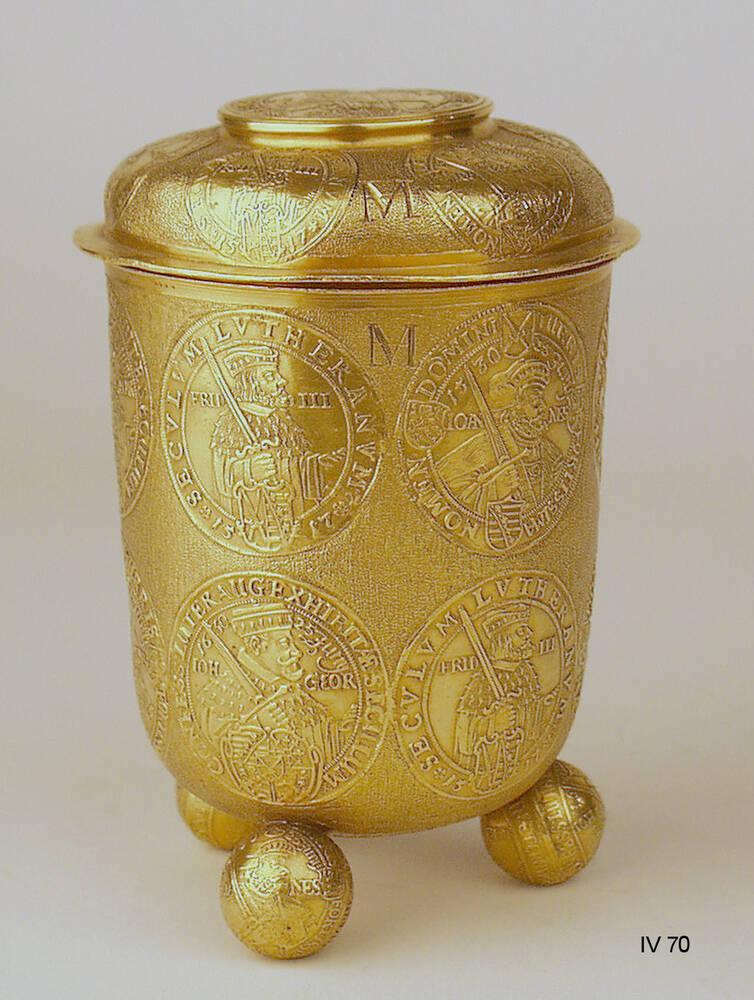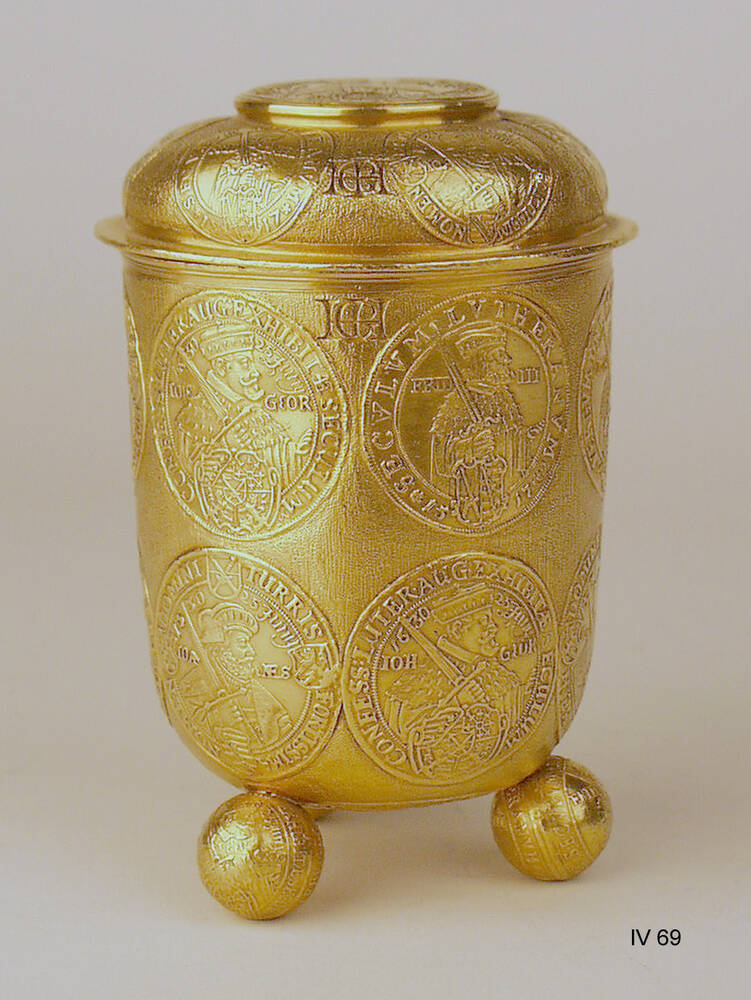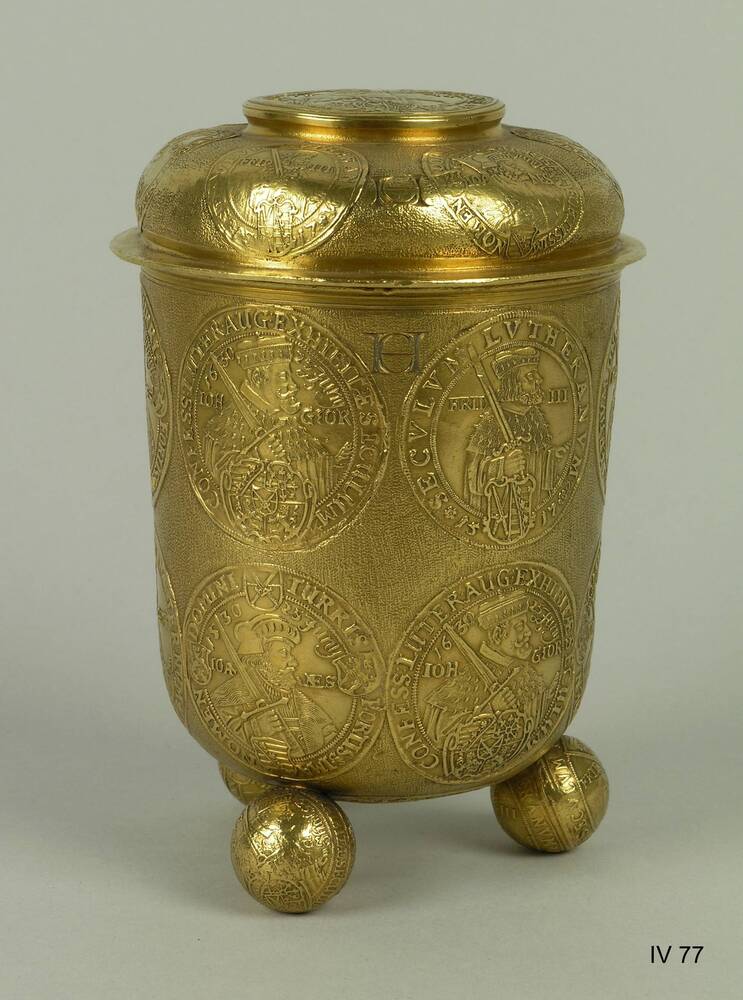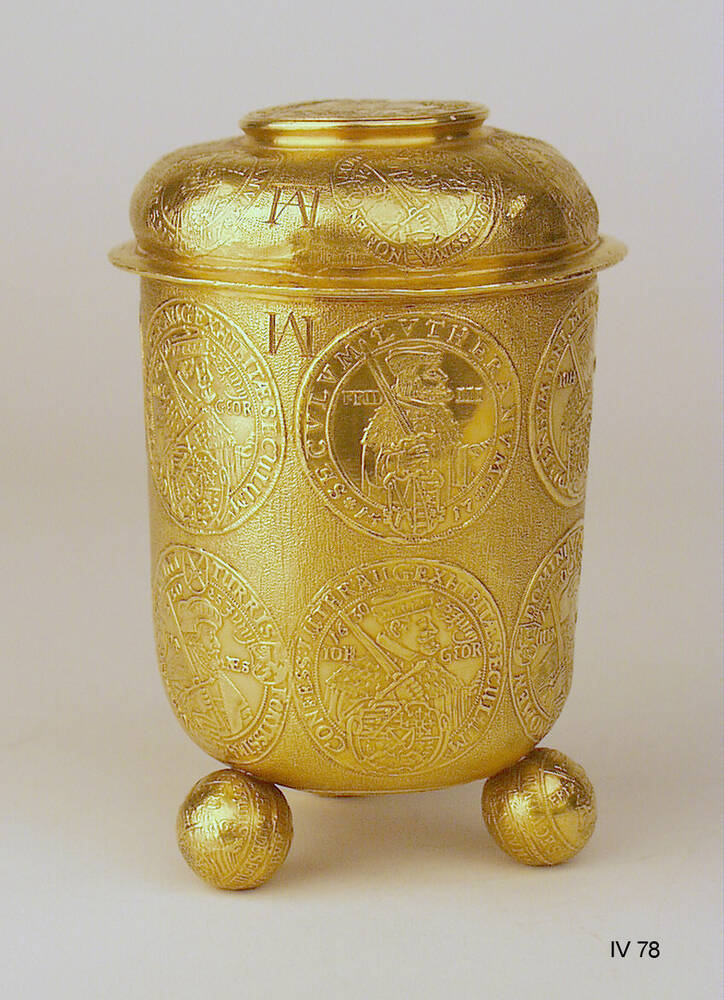These four, very similar beakers are made of pure gold. Each one of them weighs almost one-and-half kilos. But it isn’t just their material worth that makes them so valuable; they also have great significance in Saxony’s turbulent history.
They were presents from the Elector Johann Georg I to each of his four sons, probably at Christmas 1635. The gifts were a symbol of the power Johann Georg conferred on each of his sons in his will. The eldest, who was also called Johann Georg, was to succeed his father as Elector; the younger sons – August, Christian and Moritz – received newly constituted duchies, and so founded three new branches of the Wettin dynasty. On the rims of the goblets and on their lids you can see the letter H. It stands for the German word “Herzog”, which means duke. This letter is combined with the respective initial of its first owner.
But the vessels didn’t only symbolise the dignity of the ducal title. They were also a paternal admonition to the four sons always to behave as Christians and in fraternal unity. That’s why they are decorated with memorial coins, commemorating important events from the reign of Johann Georg I. These include such significant anniversaries as the centenary of the Reformation and of the Augsburg Confession, the twenty-eight articles of faith professed by the Lutheran Church.
These symbols of office were stored in leather-covered cases lined with velvet and decorated with gold tooling.
When the three subsidiary branches of the dynasty died out in the eighteenth century, the three dutchies became once again part of the Electors’ possessions, and their symbols – these goblets – returned to Dresden.



